The periwinkle flower (Vinca) is a member of the Kutrovy family. This genus is represented by deciduous and evergreen creeping dwarf shrubs or herbaceous plants that are perennials. In nature, periwinkles are found in North Africa, Asia and Europe. Translated from Latin, vinca means "twine", this plant can creep along the surface of the soil, and it can also survive in rather harsh conditions. Thanks to this, this herb has become a symbol of vitality and vitality. There is a legend that says that the periwinkle, which blooms in early spring along with the violet, complained to Flora that no one was paying attention to him, and then she made his flowers larger than those of the violet, and also increased his lifespan. For a long time, people believed that the periwinkle has magical powers. So, one of the beliefs was that if at a certain time periwinkle flowers were collected, they would be able to drive out evil spirits, in this regard, they tried to hang them over the front door. The same feature of the plant helped to identify witches. And this plant was considered magical because it was incredibly tenacious, so if there is even a drop of water in the vase, the periwinkle flowers will not wither. And the fact that if the periwinkle is removed from the vase and planted in the soil, it will easily take root and continue to grow, speaks of its vitality.
Content
- 1 Features of periwinkle
- 2 Growing periwinkle from seeds
- 3 Caring for periwinkle
- 4 Types and varieties of periwinkle with photos and names
- 4.1 Great periwinkle (Vinca major)
- 4.2 Small periwinkle (Vinca minor)
- 4.3 Pubescent periwinkle (Vinca pubescens)
- 4.4 Herb periwinkle (Vinca herbacea)
- 4.5 Pink periwinkle (Catharanthus = Vinca rosea = Lochnera rosea), or catharanthus, or Madagascar wine, or pink periwinkle, or cayenne jasmine, or lochner
- 5 Periwinkle properties
Features of periwinkle
Periwinkle is a creeping shrub or a herb that has erect stems. Opposite glossy leathery leaf plates are dark green or greenish. Sometimes on the leaf plates there are specks or a border of cream color. Single large flowers growing from the leaf axils are painted pink, white or lilac. The funnel-shaped corolla has a cylindrical long tube.
Mass flowering of this plant is observed in the spring. At this time, periwinkle looks especially attractive due to the fact that its peduncles rise up.After most of the flowers have withered, the plant will continue to bloom. Individual flowers are present on the bush throughout the growing season. The fruit is a pair of cylindrical leaflets. In the wild, there are about 12 species of this plant.
Growing periwinkle from seeds
What time to sow seeds
Sowing periwinkle in open soil should be done in spring or before winter, when almost all garden plants will be dormant. Sowing seeds can also be done in the summer, but for this you should choose a cloudy or rainy day.
The sowing site should be in a shade or shaded place, in which case the periwinkle will grow best. But a well-lit area is also suitable for sowing. The soil should be loose, well-drained, rich in nutrients, and still slightly acidic or neutral. Poor soil must be prepared before sowing; for this, mature compost is introduced into it for digging.
Sowing features
Seeds are sown in shallow grooves (about 10 mm). When they are sealed, watering occurs.
Caring for periwinkle
Absolutely anyone can grow a periwinkle in their garden, even those who are poorly versed in gardening. Watering of such plants is carried out only when there is a prolonged dry period. If it rains systematically, then this crop will not need watering.
Weed grass does not harm the periwinkle at all; therefore, weeding should be carried out only when you yourself want it. To make the bush more lush and beautiful, it is necessary to periodically pinch both old and young stems.
To feed this plant, you can use organic matter and mineral fertilizers. However, organic fertilizers are still much better suited for this purpose, so you can use compost, humus or leafy soil.
When the periwinkle has finished blooming, it will need a haircut. The trimmings remaining after cutting can be used as cuttings, and they will root very well.
Reproduction of periwinkle
For reproduction of this plant, not only the generative (seed) method is used. So, it can be very easily propagated by dividing the bush or by cuttings. Planting cuttings for rooting is carried out in open soil and do it in spring time or in the last days of August or the first days of September. The distance between the cuttings should be from 0.2 to 0.3 m.
For the reproduction of evergreen species, lodged shoots are used, while the technique of horizontal layering is used. To do this, sprinkle the stem with a thin layer of soil, and soon it will have roots.
At the very beginning of the spring period, if necessary, periwinkle can be propagated by dividing the bush. But this must be done before the stems begin to grow on the bush.
Diseases and pests
Periwinkle can get sick with fungal diseases such as rust or powdery mildew. The affected bushes must be sprayed with one of the fungicidal preparations. If the plant is affected by powdery mildew, then it must be treated with Topsin, Topaz, Skor, Quadris and other means of similar action. And if it hurts with rust, then in this case you need to use Topaz, Cuproxat or Bordeaux mixture for spraying.
If aphids settle on a bush, then in order to get rid of it, it is treated with Karbofos or Fufanon.
Periwinkle after flowering
If you already have a periwinkle in your garden, then collecting its seeds is not at all necessary. The fact is that it is much easier to propagate it by dividing the bush or by cuttings. Experts also recommend to prefer vegetative propagation methods to seed.
Types and varieties of periwinkle with photos and names
Great periwinkle (Vinca major)
The homeland of this species is the Crimea, the Mediterranean and the Caucasus. This evergreen groundcover is a perennial. Rooting of its shoots can occur along the entire length. As it grows, a curly carpet forms. Leathery glabrous glossy leaf plates have an ovoid shape, along the edge there is a border consisting of cilia. The length of the sheet plates can reach 40–80 mm. The height of the peduncles is about 0.4 m, they have single flowers, reaching 50 mm in diameter. They are painted in a special shade of blue, namely, periwinkle (this is how the periwinkle is called in France). Flowering begins in May and lasts more than four weeks. The plant is resistant to frost. However, if the winter is with little snow, then it is recommended to cover the bushes with spruce branches so that the leaf plates do not freeze. This species has a variegated form: variegated foliage is colored yellow and white, the plant is not highly frost-resistant, so it needs to be very well covered for wintering.
Small periwinkle (Vinca minor)
In the wild, this species is found in Asia Minor, the Mediterranean and in the south of the European part of Russia. Such a perennial is creeping and shade-loving. It prefers to grow in pine and deciduous forests with nutritious soil, but it also occurs on fertile sandy loams, as well as on stony and gravelly slopes. The length of the branched stem is about 0.6 m. The long-petiolized glossy leathery leaf plates have an oblong elliptical shape. In length, leaf plates reach 30–50 mm, while their dark green color does not change even in winter. The height of the peduncles is about 20 centimeters, they have single funnel-shaped flowers and blue color, which reach about 25 mm in diameter. Flowering begins in May or June and lasts about 30 days. The formation of five-leafed fruits is extremely rare. In this regard, this species is propagated mainly by vegetative methods: branching of rhizomes, cuttings and rooting of stems. The life span of this periwinkle can reach several decades. It has been cultivated since 1306. It is frost-resistant, but if a winter with little snow is expected, it is better to cover the bushes with spruce branches. Caring for these types of periwinkle is as simple and easy as for everyone else. Garden forms:
- red;
- white-colored;
- red terry - the color of terry flowers is purple;
- variegated - yellow-golden leaf plates;
- terry - with blue flowers;
- white-bordered - small rounded leaf plates have a white uneven border along the edge, this variety blooms extremely rarely and is used to form variegated rugs on the slopes;
- golden motley - shiny, saturated green leaf plates are even smaller in comparison with the previous type, on their surface there are many longitudinally located rich yellow strokes.
Pubescent periwinkle (Vinca pubescens)
In nature, this species is found in the coastal forests of the western Caucasus. In places of contact with the soil, its creeping stems give roots, as a result, by the onset of autumn, rooting of almost all nodes in the middle and upper parts of the shoots is observed. Due to the fact that the raising of the peduncles occurs vertically, it seems that the cover is loose. Single flowers reach 35 mm in diameter. Flowering begins in May, and lasts about 4 weeks. Before winter, foliage dies off.
Herb periwinkle (Vinca herbacea)
Under natural conditions, this species can be found in Central Europe, Crimea, southern regions of the European part of Russia, Asia Minor, the Caucasus and Ukraine. Vegetative creeping stems.Glossy elliptical leaf plates fly around before winter. The height of the peduncles is about 15 centimeters, they bear single flowers of blue or purple color, reaching 30 mm in diameter. Flowering is observed from the last days of May to the end of June. Such a plant is resistant to frost. If a winter with little snow is expected, then the bushes should be covered with spruce branches.
Pink periwinkle (Catharanthus = Vinca rosea = Lochnera rosea), or catharanthus, or Madagascar wine, or pink periwinkle, or cayenne jasmine, or lochner
The catharanthus has a large number of different names. To date, experts have identified such a plant in a separate genus, which unites 8 species. However, many gardeners still believe that this plant is a pink periwinkle. The height of such an evergreen shrub is about 0.6 m. Erect shoots branch in the upper part. Sedentary opposite alternate glossy leaf plates are entire, they are colored dark green and have a white median vein. The foliage reaches 70 mm in length. Flowers seated in the upper leaf axils are pink in color. Flowering begins in late spring and continues until autumn. The fruit is a crescent achene. In 1976, there was a significant acceleration in the development of this species, because at this time specialists from America began to study interspecific hybrids of such a plant. Thanks to them, the following varieties, which are currently very popular, began to be cultivated:
- Grape Cooler - peduncles are painted in lilac-pink color, they have a white eye;
- Perepmint Cooler - white flowers have a red eye.
For the past 15 years, German specialists have also worked on the creation of new varieties. Thanks to them, the following varieties were born:
- Variety series First Kiss... The height of compact bushes is about 0.4 m. The color of flowers has 13 different options.
- Mediterranen and Appleblossom Cascade - these varieties are recommended to be grown in hanging baskets. If the plant is well looked after, then its stems will reach 150 cm in length.
Periwinkle properties
The healing properties of periwinkle
Periwinkle is an extremely useful plant, which is why it has been used for a long time both in pharmacology and in medicine. The fact is that this plant contains an alkaloid that is able to prevent cell division. To date, the industrial cultivation of such a culture has been discontinued, since they learned to synthesize this alkaloid artificially. It is a part of immunosuppressants and antineoplastic agents. However, despite this, periwinkle is medicinal and today is widely used during the treatment of various cardiovascular diseases:
- The pubescent periwinkle contains glycosides called pubescin and vinine, which help lower blood pressure.
- Periwinkle pink contains the alkaloid reserpine, which is quite valuable. It also helps lower blood pressure.
- The herb periwinkle contains rutin, and it is often prescribed by doctors for hypertension.
Periwinkle also contains glycosides. In addition, some species contain ursolic acid and other active substances.
In addition to alkaloids, periwinkle contains tannins, anthocyanins, organic acids, sugars, vitamins, mineral salts, steroids and phenolic compounds. Means made on the basis of this plant are used in the treatment of diseases such as: cerebrovascular accident, osteochondrosis, ischemia, atherosclerosis, vascular lesions, psychosis, schizophrenia, depression, autonomic neurosis, polyneuritis, movement coordination disorder, the consequences of meningoencephalitis, and even complex diseases of the ears, throat, nose - sensorineural hearing loss, ototoxic neuritis, vasomotor rhinitis, decreased sense of smell, postinfluenza neuritis of the auditory nerve, atrophic rhinopharyngolaryngitis.
In alternative medicine, such a plant began to be used in the days of Dioscorides and Pliny the Elder. For example, catharanthus in China has been used to treat hypertension.In the Caucasus, the periwinkle species growing there are distinguished by antimicrobial, vasodilating, blood-purifying, fixing, wound-healing and hemostatic effect. This plant was used to treat colic, toothache or headache, sexual weakness, diabetes mellitus, female diseases, scurvy, bad breath, fever, tuberculosis, colds, etc. It was also used externally for bleeding of the uterus or from the nose, for lotions for itching, rashes and skin eczema, as well as wounds.
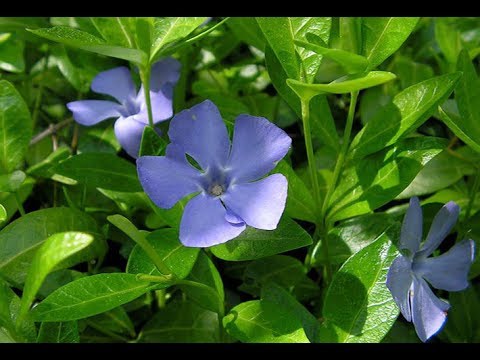

Watch this video on YouTube
Contraindications
Periwinkle is considered a poisonous plant, so it is forbidden to treat it on its own. Before you start taking drugs from such a plant, you should consult with a specialist. The fact is that with an overdose, inhibition of cardiac activity is observed. The use of such funds is prohibited for pregnant women, and at any time.

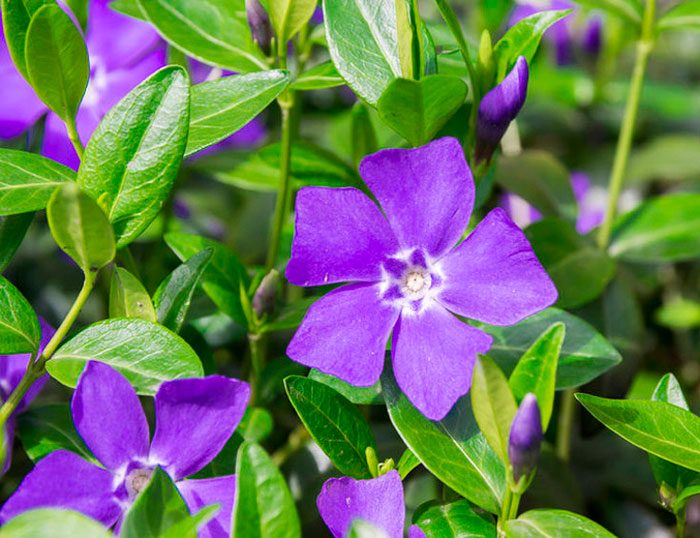
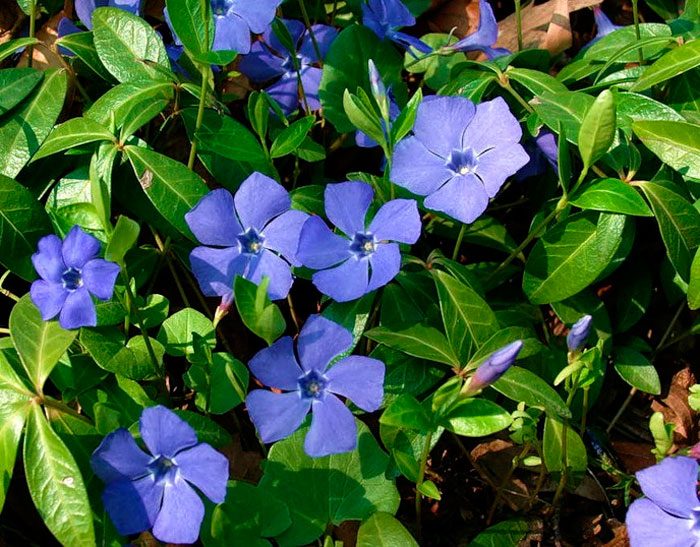
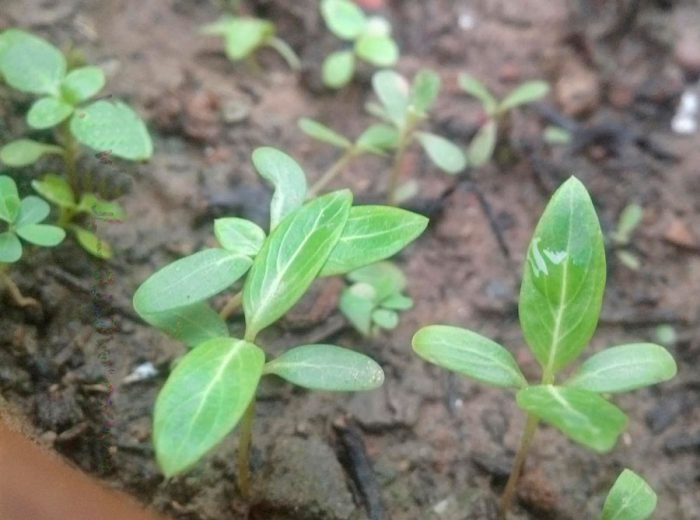

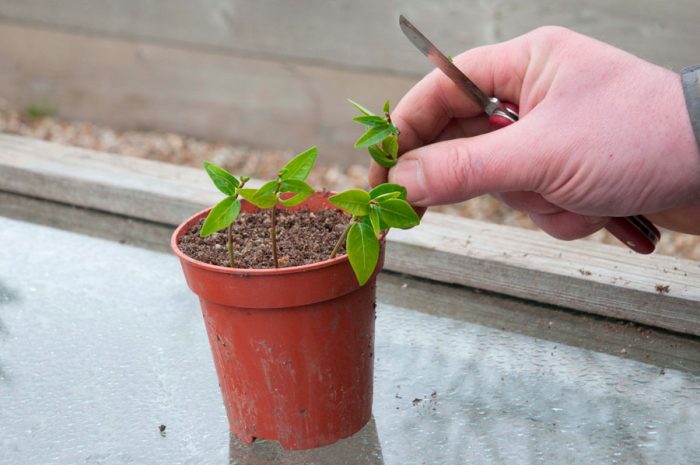

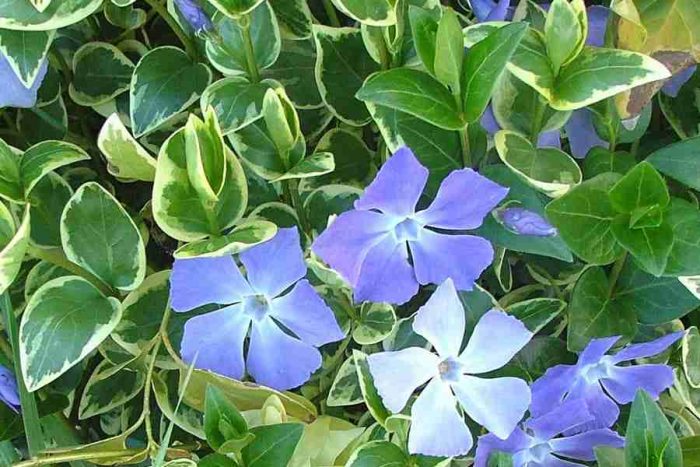

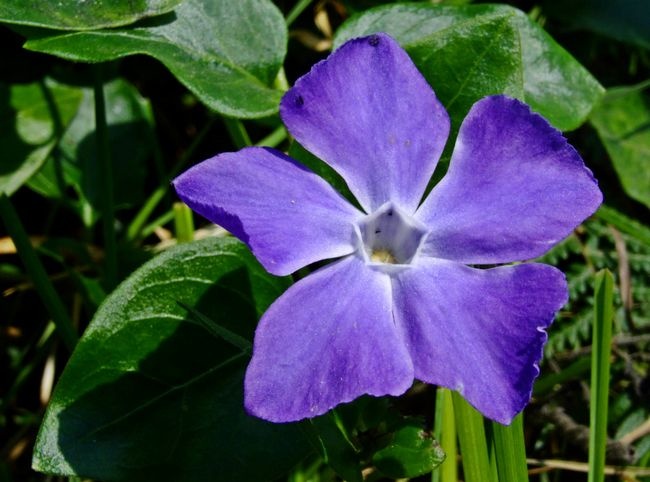
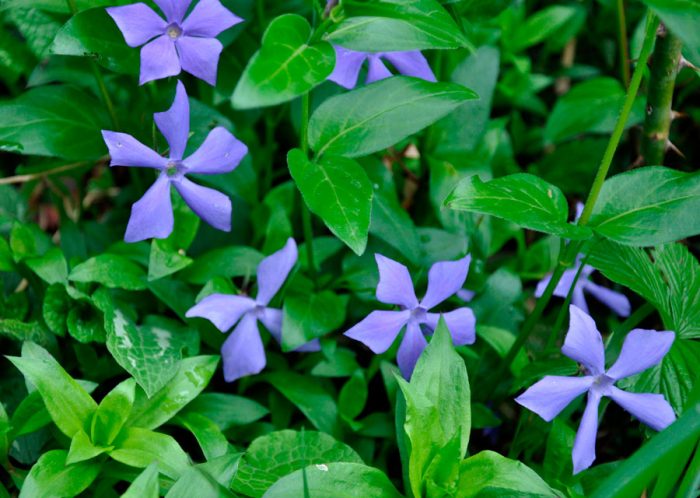
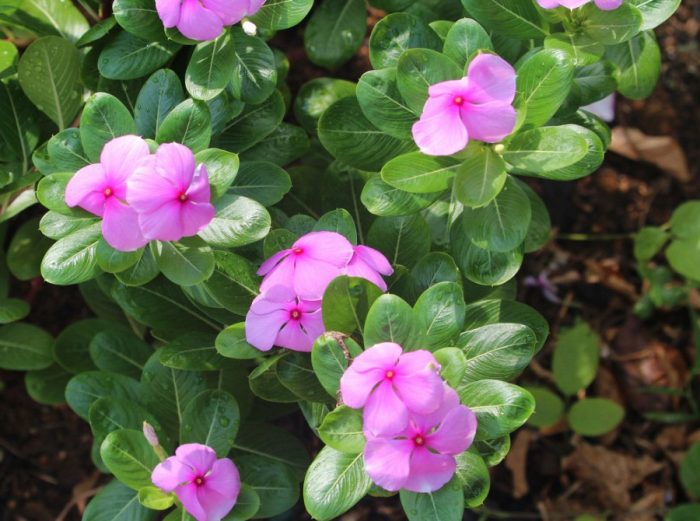


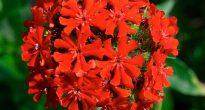

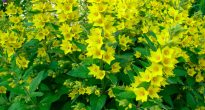






Excellent article
a lot of useful things ... now I know enough about my plant ... I really like it ... beautiful and unpretentious
In a flower shop, a specialist advised me to plant it in a cemetery, as not a whimsical plant that does not require essentially any care at all and is not capricious to any soil (clay) and lighting.
I'm also looking for a suitable flower for the parents' grave, summer in the Urals is often cool, rainy, the cemetery is sunny, I don't have to come often, I tried to plant marigolds, cornflowers - all the weeds ruin
A terrible plant! Spreads throughout the site, horror. It is almost impossible to get rid of it.